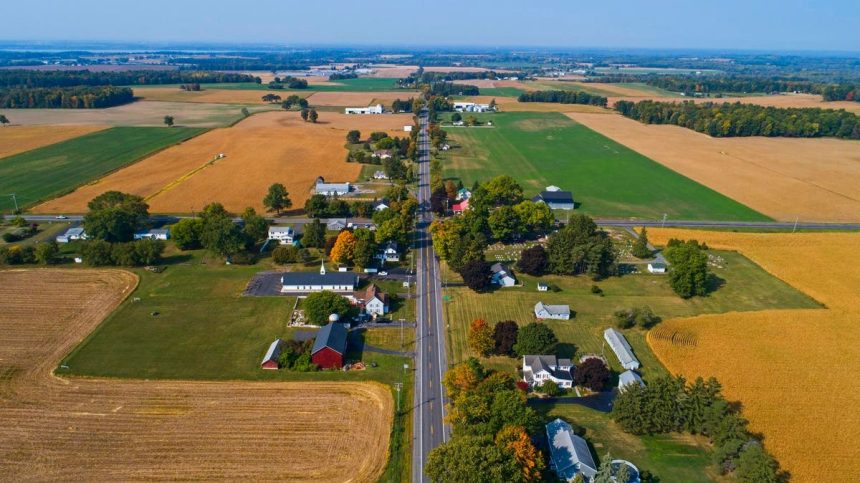I am the Managing Partner of EB5AN—a national EB-5 visa firm with 2,300+ foreign investors from 60+ countries.
Under the new rules introduced by the EB-5 Reform and Integrity Act of 2022 (the “RIA”), rural EB-5 projects offer unprecedented benefits to immigrant investors. Many in the EB-5 industry predict a sustained upturn in demand for EB-5 projects in rural areas.
While many new EB-5 investors are considering rural projects, they also need to be aware of the financial risks associated with this project category. In many cases, real estate developments in rural areas face a unique set of challenges that result in a higher risk profile.
Evaluating the common financial risks in rural EB-5 projects will help potential EB-5 investors safeguard their hard-earned capital while receiving the unique immigration benefits granted by the RIA.
Immigration Benefits For Investors In Rural EB-5 Projects
To incentivize investment in rural areas, the RIA now grants priority processing to investors in rural EB-5 projects. This means that a rural investor’s EB-5 petition can potentially be adjudicated years faster than otherwise possible. I recently saw a case where USCIS processed a rural investor’s initial EB-5 petition in only 11 months. In contrast, many petitions usually take several years to be adjudicated.
Under the RIA, rural project investors also qualify for set-aside visas. Twenty percent of the yearly EB-5 visa supply is now reserved for rural investors. This allows applicants from backlogged countries to avoid years of additional processing delays by investing in a rural project. China and India have historically been the two largest EB-5 markets. We are already seeing a surge in demand from the Chinese market under the new rules.
These two new benefits have largely shifted the EB-5 industry’s attention toward rural project offerings.
Layers Of Risk For EB-5 Investors
EB-5 investors face two layers of risk: immigration and financial risk.
Regarding immigration risk, EB-5 investors are not guaranteed to get permanent U.S. green cards. They will only qualify if their invested capital is used to create at least 10 jobs. I’ve found that in most cases, job creation is calculated based on an EB-5 project’s construction spending.
In addition, USCIS requires EB-5 investments to hold the potential for both financial loss or gain. This is known as the “at-risk” requirement. It creates a degree of financial risk for EB-5 applicants.
Both of these factors make it essential for EB-5 investors to choose financially viable real estate projects.
Risks Of Investing In Rural Real Estate Developments
One significant risk of investing in a rural real estate project stems from the lower population density. Compared to urban areas, I’ve found the rural property market often experiences less turnover. This means that properties may sit on the market for much longer before they are sold. As a result, EB-5 capital can be tied up in a rural project for extended periods.
Lower population levels often mean a smaller pool of potential buyers or tenants, adding an additional layer of risk. Unlike urban areas, which have diverse economic opportunities, rural areas tend to have less varied economies. Any significant change in the local economy can have a large impact on the area’s real estate market. For example, if the main industry in a rural area declines, it can cause a significant decrease in the population and, consequently, the demand for housing.
Location also plays an important role in rural real estate. The lack of infrastructure and amenities in rural areas can make these properties less attractive to potential buyers or renters. Issues such as limited access to healthcare, education and shopping facilities may deter individuals from relocating to these areas.
Furthermore, rural locations often have fewer transportation links, making commuting to work in nearby urban centers a challenge. This can limit the pool of potential occupants and slow the growth of real estate values.
Given the economic uncertainty associated with rural areas, rural projects often find it more difficult to secure financing. Banks and other lenders may be more unlikely to find a rural project creditworthy as opposed to a development in a densely populated urban area. In addition, real estate developers are also contending with high interest rates.
This drives some developers to rely on EB-5 funding for their rural projects. This increases investor risk even further; if the project fails to raise the targeted amount of EB-5 capital, it will not reach completion, and the investors will likely lose both their money and immigration prospects.
The above risks are even more pronounced in early-stage rural projects. If a rural EB-5 project has not begun construction, or has just begun construction recently, it will be more difficult to evaluate its financial viability. Such projects have very limited track records and have not yet generated revenue.
In these cases, the best investors can do is to rely on demand projections that may turn out to be significantly lower than expected. Construction costs, material prices and other factors can also be unpredictable.
Finding A Safe Rural EB-5 Project
As potential investors do research on various rural projects, I highly recommend that they keep these factors in mind. The key is to look for a rural EB-5 project that has already demonstrated its financial viability.
Look for the following in a rural EB-5 project:
• An operative senior loan with a major bank.
• Construction should already be well underway.
• A significant number of EB-5-eligible jobs—if not all the required jobs—should already be created.
• The developer should be well-capitalized and have a strong track record in similar projects.
• Preferably, the project should already be generating revenue. For example, single-family home developments can begin to build and sell units relatively quickly, thus showing whether the project’s demand projections are valid.
• The project should not rely on EB-5 funding to reach completion.
While making a rural EB-5 investment entails some unique risks, investors don’t have to choose risky projects. Through careful research, they can find low-risk, financially viable rural developments.
The information provided here is not investment, tax or financial advice. You should consult with a licensed professional for advice concerning your specific situation.
Forbes Business Council is the foremost growth and networking organization for business owners and leaders. Do I qualify?
Read the full article here










